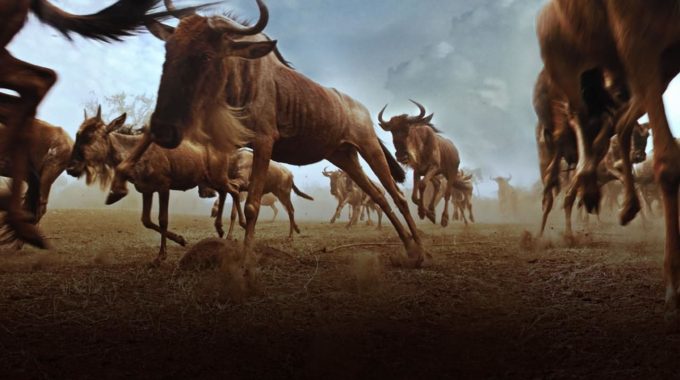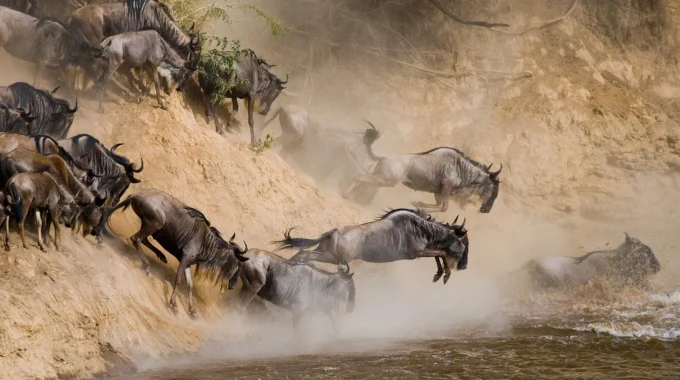A Kenya safari cost can vary significantly based on several factors, such as the season,…
What is the biggest animal migration in Africa?
What is the biggest animal migration in Africa? –
The biggest animal migration in Africa is the Great Migration, which primarily involves the movement of millions of wildebeest, along with zebras, gazelles, and other herbivores, across the plains of the Serengeti in Tanzania and into the Maasai Mara in Kenya. This migration is considered one of the most spectacular and largest land-based migrations in the world.

Details of the Great Migration:
-
Species Involved:
- Wildebeest: The primary species in this migration, with around 1.5 million wildebeest making the journey.
- Zebras: Approximately 200,000 zebras also participate in the migration, following the wildebeest for food and safety.
- Thomson’s Gazelles: Around 300,000 of these smaller gazelles also join the migration, though they trail behind the larger herbivores.
-
Distance and Route:
- The Great Migration covers an annual journey of up to 1,800 miles (2,900 kilometers).
- The animals move in a circular pattern within the Serengeti-Maasai Mara ecosystem. The migration begins in the Serengeti in Tanzania, where the herds start their journey around April to May.
- In Kenya, the herds move north into the Maasai Mara, where they stay until about October. Before the cycle restarts, they head back south to the Serengeti during the dry season to give birth.
-
Timing:
- Calving Season (January – March): The migration begins with calving in the southern Serengeti plains, where thousands of wildebeest are born. This is a vital time for the young animals, as they must grow quickly to keep up with the moving herd and avoid predators.
- River Crossings (July – August): The most dramatic part of the migration is when the herds attempt to cross the Grumeti River and Mara River, both of which are filled with crocodiles. These crossings are often the subject of intense predator-prey drama, as lions, hyenas, and crocodiles lie in wait to catch the vulnerable animals. The river crossings are widely regarded as one of nature’s most breathtaking spectacles.
- Dry Season and Return (October – December): After spending time in the Maasai Mara, the herds head back to the Serengeti in search of fresh grazing grounds as the rains arrive and vegetation regrows.
-
Why the Migration Happens:
- The migration is driven primarily by the search for food and water. The herbivores follow the rains, which bring new grass and grazing areas. The rainfall patterns and availability of fresh grass dictate the movement of the animals.
- Predators: Predators like lions, cheetahs, and hyenas follow the migrating herds for easier hunting opportunities. The constant movement of herbivores ensures a regular supply of food for these carnivores.
- Reproductive Strategy: The timing of calving coincides with the availability of fresh grazing, ensuring the newborns have the best chance of survival.
-
Ecological Impact:
- The Great Migration plays a crucial role in the ecosystem. The herbivores help to maintain the balance of grasslands by grazing, which prevents overgrowth. As they move, they also disperse seeds, which aids in the regeneration of plant life.
- Following the migration, predators regulate herbivore populations and contribute to the overall health of the ecosystem.
- This migration sustains the livelihoods of thousands of people, particularly those involved in tourism. The migration attracts millions of visitors each year to Tanzania and Kenya, making it a critical part of the region’s economy.
-
Threats and Conservation:
- The Great Migration is increasingly threatened by human activity, including land development, poaching, and climate change. Building roads, fences, and other infrastructure can obstruct the animals’ migration routes and make it harder for them to find food and water.
- Through several international partnerships and the governments of Tanzania and Kenya, the Serengeti-Maasai Mara ecosystem is largely protected. Efforts to conserve the migration route are still ongoing.
Conclusion:
A stunning natural spectacle, the Great Migration demonstrates not only the animals’ innate survival instincts but also the intricate interdependencies among Africa’s ecosystems. It is a dynamic event that encapsulates the cycle of life and death, with the movement of millions of animals shaping the landscape in an ever-changing rhythm.



